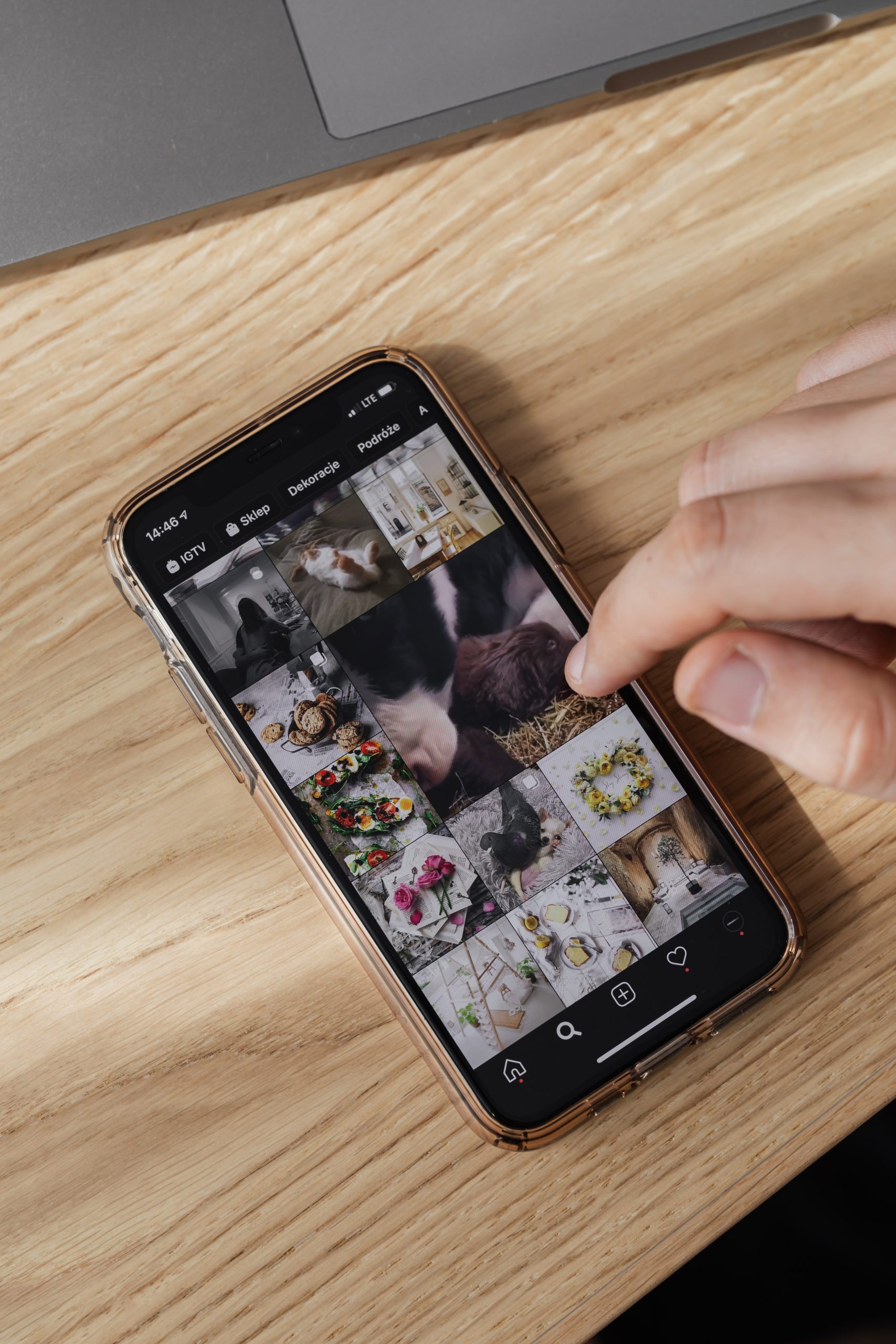PR trends
6 Proven PR Tips for Effective Public Relations Management
Public relations (PR) can be a tricky road to navigate. You are trying to put the word out in the market for your company, product, or service but also want to ensure you’re presenting your brand in the best light. Fortunately, by following these six PR tips we have curated, you can avoid making costly PR mistakes and instead build relationships and connections that will help your brand grow.
1. Create an Effective Strategy

To drive a successful public relations campaign, the first thing to put on the table is a rock-solid strategy. You can't manage public relations without this being well-defined. Your strategy should include a list of key messages, objectives, goals, and approaches based on the following.
- Know Your Audience: Not understanding who you serve and engage with can impede success. It is important to know who you want to reach out to, how you want to reach them, and why they should care about your business. The more specific your strategy is the better your chance of succeeding at PR.
- Know Your Approach: It is essential to be able to connect with your audience in a way that makes sense to them and in a manner that they find engaging. Furthermore, there are different approaches to different situations. For example, sending out a press release may work well when announcing an upcoming product launch. However, an interview request from the media could be more effective if it illustrates how the company is expanding its staff and resources.
- Develop a Crisis Management Strategy: A crisis management plan will help you avoid potential disasters before they happen. Furthermore, it will ensure you're prepared should situations go awry. You'll want to include an exhaustive directory containing contacts from all your agencies, a list of employees representing the company, and sample message responses to different situations. It’s all part of a well-defined public relations strategy. Learn more about PR for crisis management.
2. Cultivate Positive Relationships with the Media/Press

The media/press is a vehicle for all things news in our society; they can make and break any individual or organization, so you always want to be in their good books and maintain a positive relationship with them.
A mutual relationship with the media and press can help you increase brand visibility and build trust with your company’s public.
Here are some tips to help you manage your relationships with the media/press:
- Be available and responsive to their requests for interviews and other media requests.
- Don't be defensive when asked about your company's policies, practices, or requests that may seem uncomfortable or intrusive; just answer honestly and directly.
- Get involved in local events and community outreach efforts. You can also set up meetings with reporters at conferences and trade shows; it will allow you to talk about new trends in your industry or what's coming up next year.
3. Capture and Engage on Social Media

According to Jamie Johnson, contributor for the U.S. Chamber of Commerce, social media and public relations can no longer be considered mutually exclusive; they are now inextricably linked.
Social media is a powerful tool that has proven to help businesses and brands reach clients and potential customers from all over the world. It’s an easy and inexpensive medium to connect and relate with customers and potential clients, be sure to leverage the tool next time you try to put a word out.
4. Review your competition

Your competitors' actions, whether good or bad, can provide insights on how to improve your company's public relations strategy. Studying your competitors for PR can help you incorporate new concepts into your PR strategy, which can, in turn, help your brand get ahead of its competition. See your competitors as a resource and checklist on what you should and should not be doing in your business.
It is significant to note that you don’t have to change your brand to match your competitors; embrace your differences to foster a healthy competitive edge and a sense of identity.
5. Use Data Wisely
Data is an extremely valuable resource for forecasting and preparing for the future. It is the fuel that powers your PR strategy. It helps you understand your audience, measure results, and identify new opportunities for growth.
6. Never Confuse PR with Advertising
Public relations, advertising, and marketing may exist in the same universe but are not the same at all. As you know, public relations is all about reputation management, media relations, and event publicity. While advertising and marketing focus solely on selling products and services.
When managing PR, it's important to get this right and avoid talking too much about your products or services. Instead, talk about your company as a whole and the value you can bring to customers.
Next Steps for Managing Public Relations
These PR tips will guide you on how best to approach your brand’s PR. As well as, how you want to position yourself in the market. But if things get overwhelming along the way, be sure to always count on RPR firm.
Our team of experts has the experience to work with you every step of the way to ensure you have a tailored solution specific to your needs. At RPR, we have all the support and services your business needs to succeed. Schedule a free consultation with us today!
7 Successful PR Tactics
Companies that focus on creating strong public relations (PR) throughout every stage of their business are often the most successful. While there is no specific template for successful PR, there are tips you can implement to ensure you are on the right path. Here we’ll go through some of those PR tactics that business owners, creative agencies, and PR professionals should try.
1. Identify Your Target Audience

An essential step in every PR strategy is taking the time to get to know your audience. Who are your customers? What are their needs? How can you reach them? Understanding your customers will help you know how to tailor your message to speak directly to them. For instance, if your primary target audience is young people, it’s best to craft messages that will appeal to their generation. Some basic information you should consider to understand your target audience includes the following.
- Demography (i.e., age, gender)
- Location
- Education/Employment/Career/Income level.
2. Set Specific Goals
Another successful PR tactic is to have a goal in mind. Setting goals for your campaigns will help you stay focused. For example, do you want to increase brand awareness, introduce a product line, attract new customers, or manage a crisis? Highlight what you want to achieve with your campaign and set goals that are SMART (Specific, Measurable, Attainable, Realistic, and Timely).
A great way to set goals is by reviewing your previous PR campaigns and considering what you would like to improve to get better results and/or what hit the mark so you can continue to implement going forward.
3. Create Great Content Marketing

Content is a huge part of every PR campaign, so you must focus on creating messaging that is not only relevant to your target customer but also engaging enough to catch their attention and keep it. Also, the best PR tactics involve storytelling, so ensure your brand message tells a unique and original story as well. Whether it’s a social media campaign, a news release, or a radio ad, you should find a way to incorporate storytelling to take your content to the next level.
4. Have a Call-to-Action
One thing that the most successful PR campaigns have in common is a call to action (CTA). A CTA on your PR content will guide your audience to take specific action to help you achieve your goals. It’s such a simple PR tactic, but you’d be surprised how many campaigns fall short because the audience doesn’t know what to do next!
5. Choose The Right Platform
Once you have great content to catch your audience's attention, ensure you disseminate your message through the platforms on which your customers spend their time. Digital advertising is one of the best media for PR messages at the moment because it tends to reach your audience faster. According to a study on internet usage, about 81% of Americans head to the internet at least once a day.
For this reason, any brand serious about successful PR tactics must take advantage of social media and online platforms. Set up social media accounts, maintain a strong presence, engage with your audience, and share valuable content with your customers.
6. Partner With Influencers

Influencer marketing is currently one of the most effective PR tactics to grow customers and gain trust. A study shows that 51% of companies get better results through influencer marketing. Also, the majority of people are likely to trust recommendations that come from other people as opposed to the brand itself. So, seek out thought leaders, bloggers, and other influential personalities in your niche or with values that align with your brand. Establish a relationship with them and get them to endorse or promote your brand to the public.
7. Measure The Results
Measuring the results of your campaigns is often overlooked when discussing PR tactics and strategies. However, it is a great tip to ensure successful PR. When you track engagements, analyze your campaigns, and measure your result, you can figure out what worked well and what to improve. You can then use the results to guide your future PR campaigns and efforts.
Need Help Creating Successful PR Tactics for Your Brand?
Many brands are competing to get their customer’s attention, and the best way to make your company stand out is by working with experienced PR professionals. At RPR Firm, we have a team of PR professionals with the skills and experience to help you develop successful PR campaigns. Our company has more than 11 years of experience helping brands improve their reputation and maximize their revenue through PR.
Are you considering working with a full-service PR team, or do you want to chat with PR professionals for your campaign? Schedule a free consultation with us today.
5 Ways Public Relations Influences Public Opinion
Every company cares about public perception, and the good news is that public relations (PR) is one way they can create a likable brand and shape public opinion. Newspaper, television, social media, blogs, and other forms of PR are significant in shaping people’s attitudes and behavior. In this article, we go through how public relations influences public opinion.
Defining Public Relations
Companies use public relations to connect to their target audience and consumers. The trick to PR is to improve your relationship with consumers so that they understand you and positively perceive your brand/product. PR is also useful to promote your company’s values, show customers you care about them, and control damage in a crisis.
Defining Public Opinion

The definition of public opinion, in general, is that it is what the public thinks about a person, situation, phenomenon, product, or in this case, a company. According to Wikipedia, public opinion is the collective views of people in a society on a particular topic.
So, what is the relationship between public relations and public opinion?
All the processes involved in public relations focus on impacting public opinion. PR, unlike marketing, isn't about selling products. Instead, it focuses on managing a company’s reputation and maintaining positive relations with anyone interested in your brand. In other words, a lot of PR tasks involve modifying people’s opinions so that they take specific actions, like buying your product. PR sells your company by strategically shaping perceptions.
How Companies Use PR to Influence Public Opinion
Here are some of the top public relations techniques companies use to shape public opinion:
1. Understanding Your Target Audience
PR professionals need to get into the minds of their customers, identify their demography, understand their pain points, and find out what they are looking for in a product or service. This information can help companies craft targeted PR messages, releases, and copy in which customers can relate. If you understand your audience, you can tailor your PR activities to their needs, and they will have positive feelings about your brand, leading to improved public opinion.
2. Repeated Exposure
One of the ways public relations can shape public opinions is through repeated exposure to your brand and messages. You can use different ways and platforms like news websites, paid search, social media, or even influencer marketing. The more people see your PR messages, the more likely you are to influence their opinions about your brand.
Another way that PR influences public opinion depends on where the messaging is featured. Companies need to feature their PR messages on platforms that their audience uses the most. The kind of places your brand messaging appears can influence people’s perception and create the desired outcome you want, so make sure to do your research there..
3. Great Messaging
Good PR is mostly about clear communication and great messaging. In this case, PR messaging that is clear, concise, and persuasive can speak to people’s emotions and impact their opinions about your brand. As such, it’s imperative for companies to focus on the language, tone, and information used to disseminate information to their audience. Whether you are trying to manage a crisis or want to create positive news coverage about your brand, you can get public opinion in your favor by presenting your company in a positive light that will build trust with the public.
4. Third-Party Endorsement
One of the best ways to influence public opinion through PR is by getting credible third-party endorsements from news media, celebrities, journalists, social media influencers, or opinion leaders, for example. Third-party endorsements make PR feel more genuine and authentic and, as such, are likely to build a great brand image that influences people positively.
The credibility that comes with third-party endorsements is why many companies spend tons of money to have people who share the same values and vision as their brand ambassadors. Having someone as the face of your brand can create a positive reputation for your company and influence people.
5. Putting In The Work
Influencing public opinion isn't just about talking but also walking the walk. People like companies that act responsibly and put in the work that matches their statements and press releases. For this reason, it’s best to focus on creating a solid mission statement. Ultimately, people (and companies) are defined by what they do and not just what they say.
Get Started Using Public Relations to Influence Public Opinion of Your Brand

Having a good PR agency by your side is the best way to connect with your audience and maintain positive public opinion about your brand. At RPR Firm, we have PR professional teams with years of experience helping brands stand out in the competitive market.
Schedule a free consultation with us today and let our team of experts improve your brand reputation through great public relations.
4 Good PR Tactics to Try in 2023
In 2023, delivering excellent results to your clients will only be possible if you know what is happening in public relations (PR), understand the latest trends, and have effective PR strategies in place. In today's digital world, PR tactics have become more important than ever to create a positive public image. As well as increase brand awareness, and build trust with your target audience. This article will look at four good PR tactics you should try in 2023.
Good PR Tactics
Below are some of the most effective and reliable PR tactics to try in 2023.
1. Develop a Thought Leadership Strategy

Thought leadership is a good PR tactic you should try in 2023. Why? It can help you establish yourself or your brand as an industry expert and build credibility and trust with your target audience.
By showcasing your industry knowledge, experience, and insight, you can differentiate your brand from your competitors and help you gain a competitive edge.
To use thought leadership as a good PR tactic, you must create high-quality content that provides value to your audience. So, first, identify the topics your target audience is interested in and create content addressing their pain points, challenges, and questions. What’s more, that content doesn’t just have to be in written form; you could speak at industry conferences, host webinars, create podcasts, and more if you have someone on your leadership team who excels in public speaking.
2. Create Authentic Content

If there is one effective strategy that is common to every business, it is content creation. However, this strategy must be emphasized more because authentic content is one of the best ways to attract people to a brand or company.
Today, many AI tools can help create or heavily influence good content creation and consumption. However, AI lacks feelings and the connections and personalization only humans can create. Therefore, any brand or company that delivers the most authentic, unique, and compelling content will likely get a boost in its business.
Other effective content-creating strategies include the following:
Use of Interactive Content
One of the criteria for good content is the level of interaction it allows. Interactive content is the future, and it changes the PR landscape. Interactive content is different from written content, as it allows your audience to engage by clicking, liking, leaving a comment, or doing other actions. Examples of interactive content include quizzes, polls, etc.
Simplified Messages
Nowadays, people's attention span isn't as long as it used to be, and when it comes to content, lengthy copy doesn't work as well anymore. Instead, people want to read, watch, or listen to short, captivating, straight-to-the-point, and punchy content. As a result, make it a priority to create concise content, but ensure it does not lose its value.
3. Leverage the Power of Influencer Marketing
Influencer marketing has emerged as one of the most effective PR tactics in recent years. It involves partnering with social media influencers and celebrities who have a good number of followers and high engagement rates with your brand values and messaging to promote your brand or product.
Generally, influencers are some of the most active content producers and have the ability to boost various content. Another benefit of influencer marketing is that it can help you generate user-generated content (UGC), which is highly valuable for PR purposes. By collaborating with influencers, you can encourage their followers to create UGC around your brand, which can be repurposed for your own PR efforts.
4. Stay Active on Social Media

Social media is a powerful tool, making it one of the best PR tactics. In fact, according to Statista, over 50% of the world's population uses one or more of the most popular social media platforms. As a result, any brand or business that is serious about its PR tactics must take advantage of social media. It’s perfect for two-way communication with your target audience!
Social media will continue to dominate throughout 2023. It is one of the best places to widely distribute your message, avoid possible PR catastrophes, and improve brand awareness. As a result, it is essential to be involved and active in social platforms relevant to your target audience and find out how to implement this tactic into your overall PR strategy.
So, it is time to up the ante if you have a social media account or are on various social media platforms. And don’t forget to use social media metrics to track your results.
Getting Started with Good PR Tactics
PR tactics are all about using the right approach. Therefore, if you are new to running public relations campaigns or need further assistance to get started, we recommend that you consider hiring the services of a professional PR firm for good PR tactics that will earn positive results for your brand.
9 Tips for Successful PR Campaign in 2023
Achieving a successful PR campaign can be challenging, even for the most experienced brands. The online space changes fast, and getting your audience's attention has never been so difficult. This article reviews nine tested and trusted tips for a successful PR campaign.
What is a PR Campaign?

A PR campaign is a series of perfectly planned and well-executed activities organized to give a brand or company publicity to reach the right audiences. A PR campaign is primarily designed to boost a brand’s or an organization’s reputation online and offline.
Tips for an Effective PR campaign
Achieving a successful PR campaign goes beyond just writing and distributing a press release through media platforms. It requires thoughtfully planned and well-executed PR strategies. Here are nine tips to make your PR campaign successful:
1. Be SMART In Defining Campaign Goals and Objectives
Telling you to set a goal is not necessarily helpful. However, how SMART is your goal? Is it Specific, Measurable, Achievable, Realistic, and Time-bound? Once you have chosen a big goal, you need to narrow it down to be as specific as possible. For example, “we want to drive massive traffic” is not smart enough. How many weekly or monthly visitors would you like to add after your campaign? What CTR and sales conversions do you want to achieve? Some examples of successful real-life campaigns in 2022 include LEGO's MRI PR Campaign, AirbnB.org for Ukraine Campaign, and Coinbase Super Bowl QR Code.
2. Segment your Target Audience
Simply knowing your target audience is insufficient; you must break them into different customer segments. This can be based on demographics, psychographics, and buyer’s personas. For instance, if you have innovative products with each appealing to different age groups, you might want your campaign to focus on Gen Z if they have the largest share of your target market rather than targeting everyone at a time.
3. Identify your Ideal PR Campaign Company
Hundreds of PR companies are available to choose from, but not all fit your campaign objectives. You need to review the company's processes, check its portfolio, and vet their team to ensure it can deliver a successful PR campaign. PR Companies with a long history of delivering quality with happy customer testimonials to back it up are your best bet. For instance, we have over 12 years of executing successful PR campaigns with over 100 happy brands.
4. Determine your PR Campaign Budget and Allocate Resources

How much does a digital PR cost in 2023? Well, the budget varies depending on your preferred type of campaign—outreach versus full service, your audience size, and the scope of service. A digital PR campaign with a monthly retainer can range between $5000 to $50,000.
5. Craft Strong and Tailored Messages
The success of your campaign largely depends on the uniqueness of your message and the angle through which you execute it. Most successful PR campaigns are those with creative angles and unique storytelling. You must put yourself in the shoes of your target audience. Why should they spend their busy time reading about your brand-new product launch? Why should they care? Does your message resonate with them? Can your story grab their attention? If your answer is no, you might have to rethink.
6. Use the Most Effective PR Tactics
PR tactics are specific methods and techniques to support your PR campaign's messages and goals. You have many options available to you, but the ones we have tested and proven to be highly effective are media relations, content marketing, social media campaigns, and events. Also, don’t rely on a single campaign tactic to generate the best result. All these work in synergy to attract your audience's attention and build a brand reputation.
7. Set Measurable Goals and KPIs to Track Campaigns Success
You can’t have a successful PR campaign if you don’t have key performance indicators (KPIs) to track your goals. However, you must focus on KPIs that align with your goals and are quantifiable. For instance, if your goal is to boost your brand’s visibility, you might want to track the number of website visits, page views, bounces, and retention rate, and social media mentions.
8. Evaluate your PR Campaign
After generating the KPI report; you must evaluate your PR campaign to identify what worked and what you can improve. According to Buffer, 82% of PR professionals are clueless about evaluating their PR campaigns' ROI. You need to assign a monetary value to each tactic deployed and use data to evaluate its performance.
9. Adjust and Relaunch Based On Feedback and Available Data

You must be flexible when it comes to achieving a successful PR campaign. There are instances when you might need to redefine your goal and change your PR tactics or strategies based on the feedback you receive. Things change pretty fast in the digital world, so you must keep monitoring your campaigns (it’s not just a one-time effort!) to see if you need to modify your strategies. Also, document your learning and use the new knowledge to craft better campaigns going forward.
Hire a PR Campaign Expert
It’s much easier to run a successful PR campaign with the input of PR professionals with experienced teams and proven portfolios. At RPR Firm, we eliminate guesswork from public relations through result-driven campaign development strategies and tactics.
Our team boasts professional relationships with leading media, influencers, and marketing professionals. With over 11 years of helping brands boost their reputation and maximizing revenue through PR, rest assured you are in safe hands with us. Schedule a free consultation, and let's help build your brand reputation today!
Role of New Technologies in PR in 2023
Public relations (PR) is an incredibly fast-transforming industry heavily influenced by new technologies and trends. Over the last several years, we’ve seen the industry change drastically thanks to the emergence of increased social media opportunities, new artificial intelligence (AI) technology, and improved communication platforms.
In 2023, we expect to see even more changes in the PR technological space. Read on to learn more about the technologies in PR that we think will make the biggest impact in the coming year.
1. Affiliate Links & Online Shopping

Online shopping provides a wide range of growth options for businesses large, and small—and the sector is only getting bigger. PR teams would be wise to hop on new online shopping platforms, like Shopify, as soon as possible.
Shopify is just one example of how the new “click-through-to-purchase” features allow users to shop at the click of literally one button, making it easier than ever to capture new customers. Amazon storefronts are another great way to take advantage of more advanced online shopping technology. PR teams should spend time curating their pages on each online shopping app and make sure it is easy to use, features high-quality images, is highly descriptive, and is optimized for whatever product marketing campaigns are currently running.
Affiliate marketing will also continue to grow in 2023. Brands and influencers can refer audiences to products or services by sharing links on blogs, social media platforms, podcasts, or on their websites. Then, the brand or influencer receives a small commission when a sale is made using their affiliate link. This is a highly scalable technology that can be used to bring in passive income for all types of brands and creators in the coming year.
2. Technology for Creators

It’s time to rethink the “influencer.” Ultra-popular creators like Alix Earle are taking over the social media landscape with their relatable content and personas. PR teams can expect astronomical collaboration prices and more authentic branded content from the highest tier of influencers. Of course, this type of polished, professional content is dependent on cutting-edge social media and video editing technology. Expect to see more video editing and photo editing apps, improved photography and videography technology, and more sophisticated content creation in the coming year.
3. Enhanced Customization
Targeting technology continues to become more and more sophisticated, and this trend will likely continue in 2023. Audiences expect high levels of customization from all sorts of digital marketing and PR, from the social media posts that are suggested to them to the ads they view. Public relations campaigns are no exception to this rule.
PR professionals can use new and improved media targeting technologies to build stronger, more authentic connections with publications and writers. This will be a more effective strategy than mass pitching, and it will also lead to better coverage for clients; quality over quantity is key in the PR landscape. PR teams should also expect to employ AI and other new technologies to do better media and pitching research on the front end of campaigns.
4. Artificial Intelligence

You might be sick of hearing about AI, and who could blame you? AI seems to be everywhere these days, and it doesn’t look like it’s going away any time soon. PR professionals would be smart to adopt this technology for as many clients as they can, as soon as possible.
AI technologies in PR have become fairly commonplace, but industry professionals can expect to see them expand more in 2023. For example, automated emails using triggers from actions taken on a website already help with nurturing customers down the marketing funnel. Chatbots are also an oft-used form of AI that makes PR teams’ lives easier.
But professionals can expect to see these same technologies in PR applied to other areas of the industry, like in feet-on-the-street campaigns and at in-person events and trade shows. Pay close attention to Fortune 500 corporations who will likely be on the cutting edge of investing more AI technology into their PR campaigns this year.
What is the best way to stay on top of new technologies in PR?
Our team recommends reading newsletters like Raisin Bread from Marketerhire, Sprout Social’s newsletter, or Marketing Brew to stay on top of trends and new technologies in the larger PR and marketing landscape. You can also follow trend and tech accounts on social media platforms like Instagram and TikTok. Later does a great job of showcasing trends in social media and digital marketing. You can also read blogs like Really Good Emails. These, of course, are just a few places you can get your PR and marketing technology news—find the platforms you like the most and stick with them!
If you are too busy to keep up with the trends yourself, consider hiring a PR firm. PR teams specialize in keeping up with new technologies and trends, and your team will be able to make recommendations to you about which technologies to adopt and which to hold off on for the time being. Contact our team today to chat all things PR and explore what a partnership might look like for you!
Is a Public Relations Specialist Different From a Journalist?
Is a public relations (PR) specialist different from a journalist? The short answer is yes! Although there are many similarities between the two professions, they have distinct functions in both the marketing sphere as well as in their relationships with brands and the community.
Keep reading for our full breakdown of the differences between the two career paths—and why you might choose one over the other.
1. Amount of Responsibilities

At publications, journalists on staff typically focus on one main role. Editors will work with journalists to improve the strength of their writing, while journalists will focus on writing compelling stories for their beat. There is very little overlap between the two. The newsroom functions smoothly because each person within it has a defined job function that complements the others’ work perfectly.
Meanwhile, in the world of public relations, Public relation specialist will often wear multiple hats for each of their clients. They might write, edit, host in-person events, manage social media communities, and send marketing emails—sometimes all within the same day! There’s less of an opportunity to focus on one task or become an expert in any area, but the fast pace and daily variations for PR pros can be thrilling.
2. Different Audiences
When journalists write stories, they are always addressing the general public. Even journalists who cover niche beats, like car racing or local politics, write to address general audiences.
In PR writing, however, specialists write to address specific audiences that care about the brand’s messages. This can mean people who’ve selected to “follow” a brand on social media, employees, company stakeholders, or email subscribers. No matter who they are, at some point they opted into hearing from the brand, and they have invested in the brand’s story in some way. Because of this, PR writing tends to be a bit more targeted in content and tone, and it can also be a little more creative and whimsical in nature. PR writers might adjust for a variety of demographics, including age, region, gender, or relationship to the brand.
3. Differences in Tone

As mentioned above, journalists need to write stories that address large swaths of audiences and that approach news in an unbiased, factual manner. That means journalists typically need to follow a strict code of ethics in their writing. They also need to take a wholly objective approach to their stories. Tweaking a quote or message to fit better with the story is not acceptable and can destroy the public’s trust in that journalist and publication.
Meanwhile, public relations specialists get to let their creative flags fly when it comes to writing. PR teams select messaging, verbiage, tone, and mediums that best represent their clients and the stories they want to share—even if their claims are a bit biased or out there. PR specialists also don’t have to worry about including all the facts as a journalist does—they can pick and choose the messaging that fits the campaign best, whatever it may be. Molding a favorable narrative around a client, especially a company with a bad reputation, is hard work that requires lots of creative thinking and problem-solving in the writing space.
4. Main Goals

The ultimate goal of journalism is to share messages, information, and stories that the journalist believes would be interesting or helpful for their communities. Those messages might be positive (i.e., “Dog Saves Man From Burning Building”) or negative (i.e., “Company X Declares Bankruptcy”). But no matter what they cover, the journalist believes the details included within are important for the general public to know.
Public relations goals are more widespread and varied. Of course, public relations specialists want to share important information and messaging, but they also aim to create goodwill in the community, build consumer confidence, and craft a positive public perception of clients. That requires a level of bias that journalists simply can’t adopt. Because PR teams have a stake in a business’s health and revenue, harmonious relationships are at the forefront of every PR pro’s mind at all times.
How should I choose whether to become a journalist or a public relations specialist?
Recent graduates and others looking to make career changes should consider both options carefully and consider each role's pros and cons. Do you prefer to tell unbiased stories or craft careful messaging? Do you like learning about many different topics or specialize in just a few? And do you like to build lots of relationships or focus on a few important ones? Journalism careers allow individuals to share important stories with the community, build a vast network, and write about many topics each week. Meanwhile, public relations specialists have the opportunity to control their own narratives, and they pride themselves on specializing in certain topics and curating strong relationships with fewer people. Ultimately, you should make your choice based on which sounds more appealing and which role matches best with your current skill set.
Want to chat with a team of PR professionals about their careers and lives in the fast-paced industry? Contact us to schedule an informational interview today!
5 Roles of a PR Firm that Will Improve Your Business Functions
You’ve probably heard of public relations (PR) firms, but what do PR pros actually spend their time doing? PR results can be challenging to quantify, but over time, comprehensive and strategic campaigns can improve many business functions and can even boost revenue. Read on to learn more about the five major roles of a PR firm and how each of these can improve business operations.
1. Develop and Implement Communications Campaigns
It’s a great idea to get an outside perspective on your business from time to time, and PR firms can do just that. As unbiased outsiders, PR firms can craft objective communications campaigns that truly highlight the business’s differentiators and key messages effectively.
Communications campaigns take a lot of work to plan, execute, and report on. Outsourcing this type of work ensures corners are not cut and ample time is spent on each task. PR firms can also decrease the overall workload that goes into campaigns because they can leverage tactics that worked in the past for other campaigns and their widespread connections with media personnel.
Finally, PR teams are equipped to monitor media coverage and opportunities around the clock. When your internal team is busy with other projects or traveling for work, your PR firm can keep campaigns moving without disturbing other workflows.
2. Monitor Media Coverage

The media cycle runs 24 hours a day, and it seems like a new media outlet is announced every week. It can be nearly impossible to keep up with all the chatter.
Media coverage is a significant task PR firms can take off your team’s list. Most PR firms are equipped with technology that can round up all media mentions of your business and other specific keywords. Ask your PR firm to provide an end-of-month report of your business’s media coverage, so you have a record to share with leadership and refer back to in the future.
You might also employ your PR firm to run competitor analyses using the same monitoring processes. Keep an eye on the types of coverage your main competitors are securing, and don’t be afraid to borrow good ideas. You might also use this research to inform the reporters and publications your business reaches out to in the future!
3. Manage Crisis Communications
Maintaining a favorable brand reputation is of the utmost importance, but proactive pitching techniques can fall by the wayside when your team has tons of other work. PR firms can keep up with your social listening.
When a crisis does arise, however, it will be all hands on deck. It’s smart to hire a PR firm with ample experience in crisis communications because, in the worst of times, things move fast. A slow response can often be interpreted by media members as a refusal to comment. Even if that’s not the case. In order to control the narrative of the crisis, you’ll need people in your corner who understand your business and can craft a thoughtful, empathetic statement in a matter of hours, not days.
Crisis communications also require a lot of time for coverage monitoring, responding to media requests, managing social media communities, and communicating with internal staff. If you don’t have an outside PR firm to help shoulder this burden, your internal team will likely have to table other work until the crisis is over. PR firms usually have multiple people on staff. They can shift assignments to deal with your crisis while your team continues pushing forward.
4. Develop Content and Key Messages

There are dozens of platforms to keep up with these days. Large companies will likely want to participate on all platforms to capture the widest audience possible.
PR firms are staffed with excellent writers and creative thinkers, which makes them well-suited for content creation. You can bounce ideas off your PR team or work with them to create and refine content buckets for any platform, from email marketing to your company blog to social media videos.
Staff members at PR firms also tend to be on top of content trends, whether it’s the latest TikTok audio or the current suggested length of LinkedIn posts.
5. Social Media Platform and Community Management

Speaking of social media, managing communities across so many platforms can be very time-consuming. PR firms can help your business ideate and draft content, schedule and publish content, respond to comments and DMs and comment on other brands’ posts. The best social media strategies include tactics for tackling all of these tasks and more—sometimes on a daily basis. This often is not realistic for internal team members. But PR firms have specialists on staff who can make quick, well-informed decisions on social media. So you don’t have to worry about getting accidentally canceled.
Social media community management, in particular, can be a time suck. Some brands select to respond to every comment and DM, while others respond to only a few. Either way, you’ll need to show your audience that you’re engaged and listening to them. Or you’ll lose followers and fewer people will see and interact with your posts. PR firms can dedicate a team member to manage your social media channels daily.
What is the best method to ensure I choose a PR firm that meshes well with my business and existing team?
First, vet your potential firm thoroughly. A great thing to do is to read case studies from past projects. You might also elect to meet your account manager to get a feel for their personality and communication preferences. At the end of the day, you’re looking for a team that fits seamlessly into your internal framework and makes your life easier, so you can continue regular daily business functions.
If you are currently looking for a full-service firm, contact us to schedule a call today!
Impacts of Intelligent Marketing and PR on Business
With a proper strategy in place, marketing and public relations (PR) can work together seamlessly to improve sales, public opinion, customer loyalty, and so much more! Marketing and PR are distinct practices—marketing focuses on the selling of products, while PR typically focuses on managing and maintaining a brand’s reputation. When applied intelligently, they complement and can strengthen one another.
Keep reading to learn about the varied impacts well-thought-out marketing and PR plans can have on businesses.
1. Increase Brand Awareness

Traditional marketing placements like out-of-home advertising, social media marketing, and in-person events can help sell products. But on a secondary level, they also work to boost brand recognition. PR teams can play off this by complementing marketing efforts with related pitches and other media opportunities. Together, these strategies can boost brand recognition across target demographics and markets.
Brand recognition is far more important for businesses than most realize—according to Liana Zavo, writing for Entrepreneur, “Without publicity and reputation, a business cannot grow in its respective industry.” Brand recognition is not only important for making sales. It also helps maintain and gain market share and subtly impacts public sentiment surrounding a brand.
2. Promote Brand Values
Trust is the most valuable thing a company can possess. With improved brand recognition comes increased awareness of brand values. As such, intelligent marketing and PR strategies can ensure the general public has a comprehensive understanding of a company’s giving initiatives, mission statement, and brand values. These key messages bolster customer loyalty, enhance word-of-mouth marketing, and help keep the top of the marketing funnel full of consumers.
Because social media marketing provides many opportunities for discourse with consumers, social platforms are a great place to share detailed information about company values. Thought leadership, well-placed op-eds, and executive interviews can all achieve similar effects; the strongest plan is to employ all of these strategies at once!
3. Strengthen Community Relations
Community relations fall into the scope of both marketing and PR. Generally speaking, marketing teams can foster relationships between businesses and their neighbors through in-person events and activations, staff volunteerism, and other foot-on-the-street initiatives. Public relations teams can help tell these stories through earned and paid media opportunities. People love to hear heartwarming stories, and these types of narratives also help to strengthen overall brand recognition and public sentiment, even though they don’t push any particular sales agenda!
Brands can also build their own communities by planning meet-ups, volunteer events, and other activations for their consumers and social media followers. PR and marketing teams can coordinate and publicize these events, which are great for demonstrating brand values in an authentic way and exemplifying that a business is interested in more than just selling its products!
4. Boost Staff Morale

Marketing and PR are not just for external campaigns! Especially when it comes to large corporations, marketing and PR strategies should be applied internally to boost staff morale and trust in executive leadership. Some examples of internal marketing and PR campaigns include the rollout of new mission statements and brand values, visual brand redesigns, and onboarding and corporate education.
Regular and effective internal communications impact the satisfaction of the workforce, which will directly affect customer service, word-of-mouth marketing, productivity, and recruitment as well as retention efforts. Internal communications can also be used to ensure employee voices are heard and taken into consideration through town hall meetings and anonymous suggestion boxes.
5. Improve the Profile of Executives
If marketing and PR strategies are executed well, the profile of top-level executives at the company will improve. This is typically achieved through securing speaking opportunities, thought leadership and op-ed placements, conference presentations, and participation on panels. Executives who appear trustworthy, educated, and connected to the company improve consumers’ confidence in the business as a whole.
Additionally, on-staff experts will receive more speaking, writing, and moderating opportunities. The PR team will have to rely less on outside placements. Everyone wins!
6. Keep Audiences Well-Informed

Not all audiences consume news and information from the same channels. Employing a robust marketing and PR strategy will ensure you’re reaching former and future customers wherever they already are instead of having to lure them to your preferred channels. Major business announcements, such as high-profile personnel changes, important product rollouts, and rebrands, should be pushed out across multiple marketing and PR channels to ensure the highest chance of informing all stakeholders. This can include but is not limited to email marketing, social media marketing, press releases, media advisories, interviews, and mailers. Marketing and PR teams must work closely to ensure the success of this type of campaign.
How important is it to hire both marketing and PR teams? Can I get away with just one?
Intelligent marketing and PR strategies will not only complement one another, but they will improve each other’s results. Often, marketing campaigns indirectly result in positive PR and vice versa. But choosing to employ one or the other will likely minimize results and weaken campaigns. Hiring both teams is not a requirement, but it is a smart business move.
Many firms offer both marketing and PR services in order to help businesses streamline their publicity needs. If you are on the hunt for a full-service firm, contact us to schedule a call today!
7 Key Benefits of PR to Society
Public relations (PR) is so much more than making a sale. The industry’s work helps build connections between brands and consumers, place important stories into the media cycle, and allows brands to give back through cause marketing campaigns. And that’s just the tip of the iceberg! Here, we’ve outlined seven benefits of PR to society at large.
1. Bring Private and Public Policies Into Harmony

It’s easy to just think of PR as press releases and social media posts for B2C brands, but PR is a wide-spanning industry that touches government work, B2B, non-profits, and beyond. Ultimately, the work done by PR professionals helps bring private and public policies into the same sphere and allows individuals on both sides to align. Mutual understanding between various groups and companies leads to greater societal efficiency and less friction, and well-executed PR campaigns can be key to unlocking this level of harmony.
2. Relationship Building
As PR professionals help businesses and individuals tell their unique stories, they leverage their extensive networks. This ultimately leads to building valuable connections between brands and other entities. Whether it’s bringing together a large corporation with a local non-profit or two individuals with similar missions, PR professionals' work often leads to fruitful, impactful connections.
3. Connecting Customers with Businesses
When PR pros manage platforms like Facebook and Instagram for a business, they simultaneously open up another reliable pathway for consumers to connect with the businesses they support. Especially, customers that have issues with their product or service can reliably get in touch with a member of the brand’s PR team through DMs or email, as their contact information will be readily available on press releases and across other channels. This, in turn, helps consumers feel heard, while brands can keep purchasers happier.
4. Ethically Shape Beliefs and Ideas

Another societal benefit of PR is the industry’s ability to shape minds and change lives. PR pros are often the masterminds behind the news you read or watch, which means they have an outsized influence in ensuring certain stories get the publicity they deserve. They can use their connections and influence to gain coverage for feel-good stories about local non-profits who give back or a local hero who did great things for the community. They can also ensure media outlets are sharing wholly accurate information and that no information is misrepresented by reporters. PR professionals, when doing their jobs well, can minimize false news stories and accurately reflect actual happenings.
5. Improve Media Literacy
With so many media platforms out there—and more launching every day—it has become increasingly difficult to navigate journalistic biases in the news. PR professionals can ensure stories that are published about their clients are fairly represented and can ask for the removal of false information. If a story is especially inaccurate, PR team members can even ask the editor to take it down or issue an apology statement. Indeed, one of the benefits of PR to society is its ability to help the general public navigate the cluttered media landscape and more easily determine which news is real and which is fake.
6. Increase Corporate Social Responsibility

Have you noticed a recent rise in cause marketing? Besides, PR teams are always looking to tell the most positive stories about their clients, and they often push for increased and improved corporate social responsibility to push narratives about their clients in a positive direction. Not only is this good for large companies because they can spotlight their contributions to society, but their dollars actually help society in the process! Moreover, PR teams can and do assist corporations in putting together 401(c)(3) organizations, developing charitable partnerships, planning and executing corporate volunteering days, and more. All of these actions contribute to positive PR and improve society as a whole.
7. Improved Internal Relations
Just as PR professionals act as a bridge between companies and the public, they can also act as a bridge between companies and their employees. They can help executives connect with the people who work for them and ensure that values, key messaging, and employee happiness are aligned from the top to bottom of an organization. PR professionals can assist executives in crafting messages that accurately represent employee sentiment and funnel feedback upward for leadership’s consideration. Happy employees who feel heard will bring greater contributions to their company.
How can I ensure my PR strategy is benefitting society?
Every good PR strategy should include a few important pillars: positive proactive pitching, social listening, cause marketing, and crisis communications. Cause marketing is the most approachable, and perhaps the most widely replicated, benefit of PR. Use your cause marketing resources to support local charities that mean a lot to your employees, and their genuine interest will shine through in subsequent media coverage. Consider asking your employees what types of causes they feel strongly about and dedicating a member of your PR team to research the best organizations to support in the area. If you approach your cause marketing from a place of authenticity, you’ll be able to ensure your efforts are truly benefitting society. If you’re looking for PR strategy or execution support, especially in the realm of cause marketing, contact us to schedule a call.










